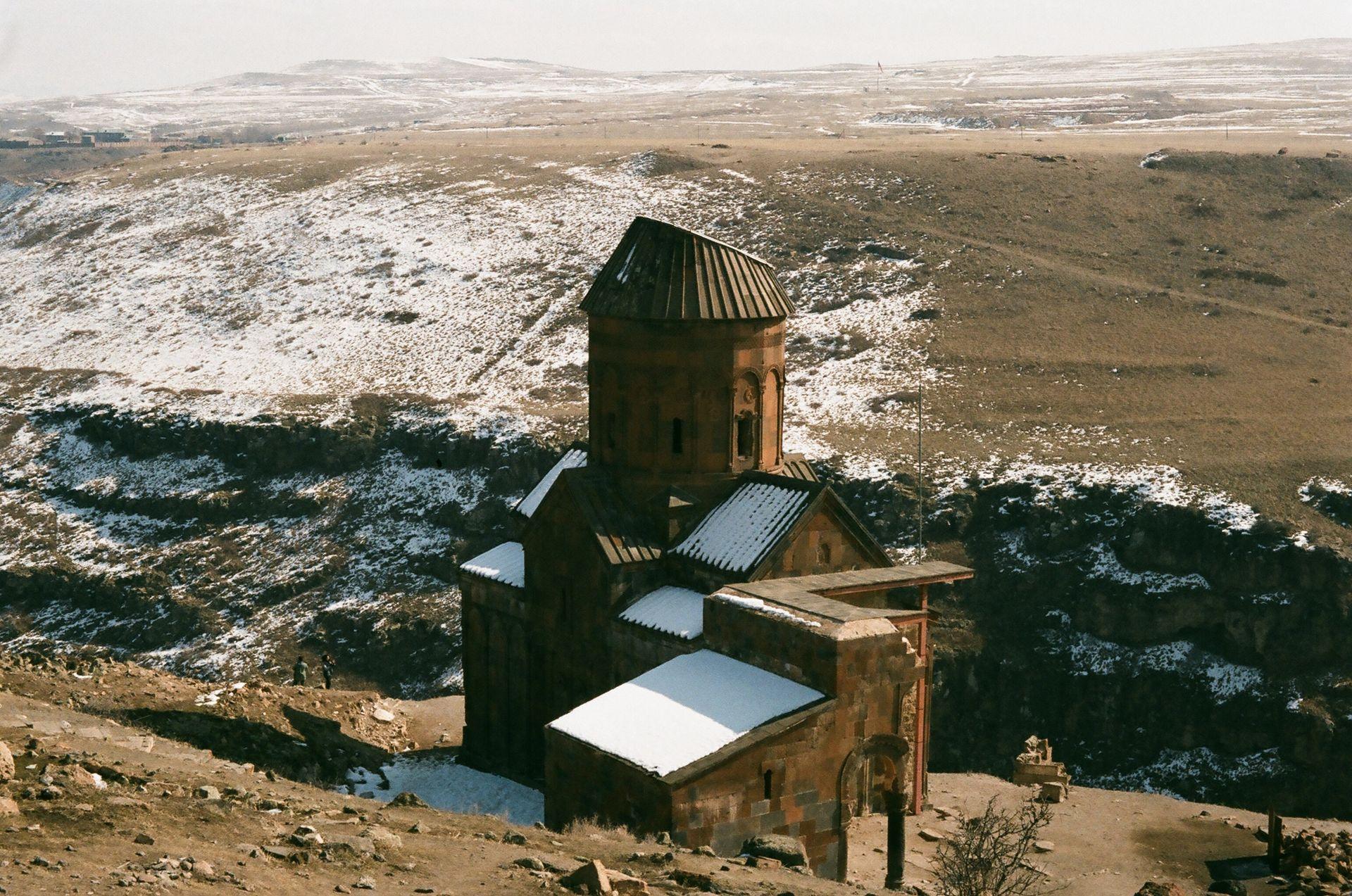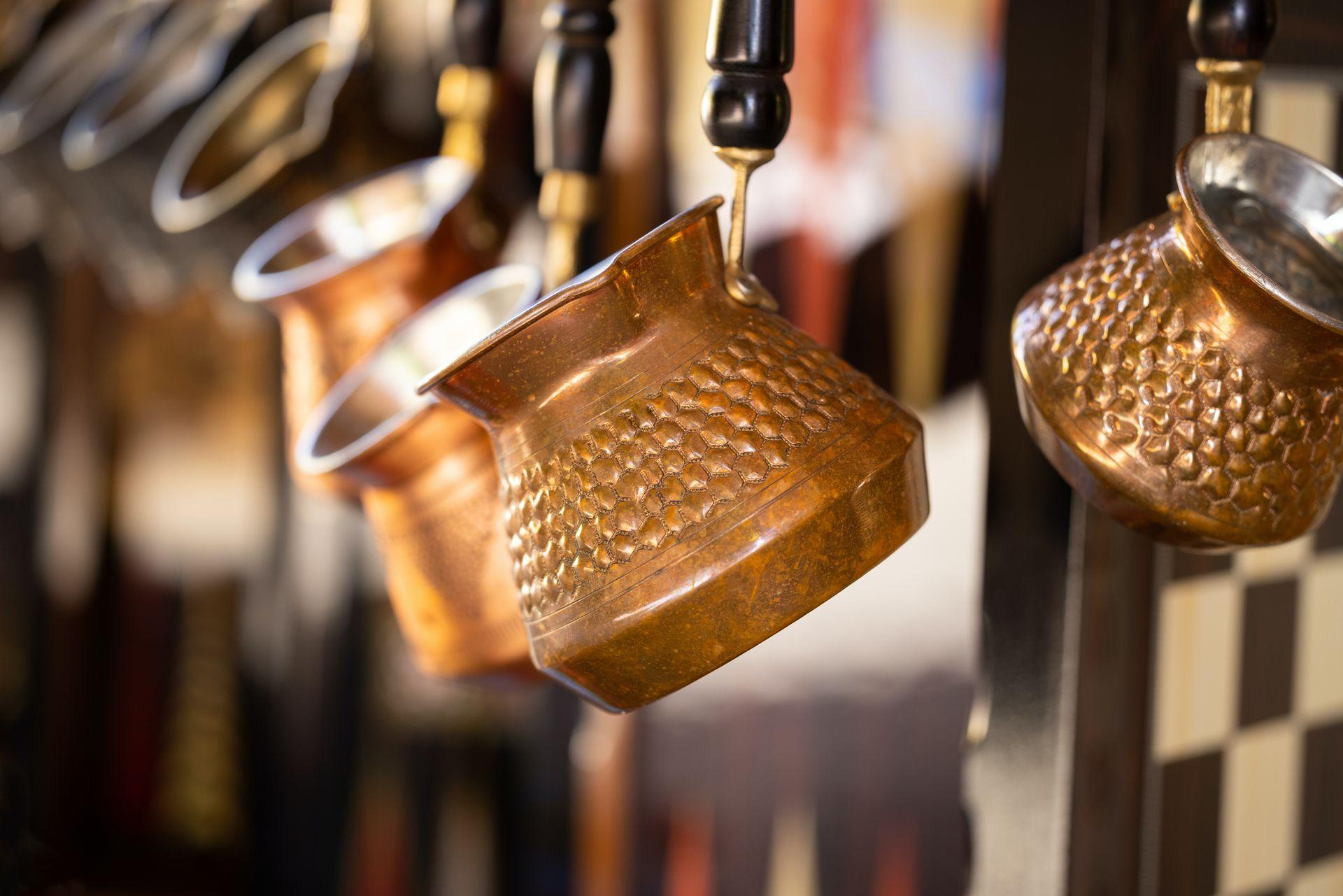There is a Turkey beyond Istanbul and it is worth visiting and getting to know it. Let us therefore head initially towards the East, in search of that eastern horizon where light and sun dawn daily, and no less prodigiously, in search of the dawn of our copper civilization.
Let us first travel to the lands of Western Anatolia and Cappadocia, to then reach Eastern Anatolia: LET US ORIENT ourselves spatially and emotionally towards the origins of our culture: LET US ENJOY THE COPPER ROUTE.
We anticipate that it will be essential to return from Anatolia with some handmade souvenir in said metal. Diverse and varied cupric souvenirs, which can range from the tea vase to the small Chalcolithic deity, through protective amulets, and/or bronze bracelets, acoustic bowls, etc., which will allow us on our return to continue in contact with the cradle of our culture, which is that of the Chalcolithic or Copper Age, born there in Anatolia about 7,000 years ago.
Let us then furtively go back through the night of time, towards a truly Edenic landscape and region, which after the Würm deglaciations and at the end of the Neolithic extended between the bed of the Tigris and Euphrates rivers. It is known with certainty that copper was intensively extracted and used in these basins, in various areas of human activity in Anatolia and Mesopotamia, beginning the Era that bears its name.
Seven thousand years later, the improvement in copper decoration continues to be carried out based on its embossing and painting, which generate an art of great beauty and elegance.
Anatolia (from the Greek Anatolé: "east, rise"; Anadolu in Turkish), also called Asia Minor, is a peninsula of Asia, bathed to the north by the waters of the Black Sea and to the south and west by the Mediterranean. Located in the Middle East, it is separated from Europe by the straits of the Bosphorus and the Dardanelles. Today it belongs to Türkiye. Although its eastern limits are somewhat imprecise and even imaginary, its area is estimated at about 756,000 km², that is, approximately 1.5 times the surface of Spain.
Copper was one of the first metals used by man, initially using it in its natural state, native copper, since the mechanisms by which the mineral could be smelted were unknown. In these early times it was molded using hammering or cold-beating techniques, which is why this phase is not yet considered Chalcolithic but Neolithic. The improvement of ceramic techniques allowed experimentation with metallurgical processes, thus beginning man to understand them. When he already controlled them, he began to make various alloys with other minerals, the most common being the mixture with arsenic, first, and the later with tin, which gave rise to bronze. Gold and silver were also used. The decisive Copper Age for humanity was born...
Evidently, and although the Copper Age owes its name and has always been identified with the use of the first metals by man, there are many other associated processes of change that are even more important than metallurgy itself: the intensification of agricultural and livestock production; the new models of territory occupation; craft specialization; the increase in exchanges; social stratification.
All of them together caused from the 5th millennium BC. C. in the eastern Mediterranean area a phenomenon that has been called the emergence of the first complex societies. Within this set of processes, metallurgy was only a relative technological innovation, since smelting copper ores does not require special techniques, but only a certain improvement in the methods used for the manufacture of ceramics: the fusion of copper is carried out at 1083 °C, a temperature that had been almost reached by some ceramic communities in the Neolithic.
The increase in productivity in agriculture must have been achieved thanks to the use of the plow; In the Mediterranean, furthermore, with irrigation techniques and the domestication of the vine and olive tree, signs of all of which have been found. Thus, the areas under exploitation could be expanded and, thanks to the appearance of the cart, the surpluses produced could be transported for exchange. In livestock farming, what has come to be called “the revolution of derived products” occurred, a consequence of the use of the driving force of livestock, milk (and its derivatives) and wool.
Social complexity was the result of the increase and diversification of production and exchanges. Thanks to the exchanges, the use of the wheel and the cart became widespread throughout central and western Europe, while copper metallurgy spread accompanying the expansion of the Beaker glass.
All these changes caused the transition from the Neolithic domestic mode of production, autarkic and directed by great men (temporary leaders), to a series of integrated and interdependent economies, controlled by stable bosses, who, exercising coercion, appropriated the surpluses. , with which the first great inequalities began to be generated within societies. Likewise, there was a clear demographic growth, which caused the expansion, stabilization and nuclearization of populations, which, especially in the Mediterranean area, reached levels considered proto-urban, with religious structures and sanctuaries, a certain urbanism and an incipient hierarchization of The settlements. These societies have been called pre-state.
The transformative nature of metallurgy probably had to influence Chalcolithic mythologies, generating demiurgic divinities (modifiers of matter), and social stratification must also have been reflected in more hierarchical pantheons, ruled by male and warrior deities, who displaced the mother goddesses. Neolithic.
Virtually every aspect of Chalcolithic life is associated with ritual. Ceremonies were carried out to honor the Gods and the celestial bodies. It is in this Age that the concept of “sanctuary” (the earthly abode of the Gods) emerges. Three Chalcolithic sanctuaries have come to light: west of the Dead Sea, in Ein Gedi, in Teleilat el-Ghassul, Jordan, and in Gilat, northern part of the Negev Desert.
Continuing with the copper routes, it is said that before the 6th millennium BC. Copper artifacts have been found in southern Turkey and northern Iraq, but possibly they had been cold worked or slightly heated to achieve some ductility. In the Shanidar Cave (Zagros Mountains, Iraq) pendants made of copper beads have been found in levels corresponding to 9500 BC. C., that is, from the initial Neolithic.1 But the first clear evidence of foundry (indicated by the presence of copper slag) has been found in Çatalhöyük, in Anatolia, and corresponds to a time close to 6000 BC. C. Throughout the 6th millennium, more metallurgical evidence appears throughout southern Anatolia, Iraq and the Iranian Zagros, from which it has been deduced that southern Anatolia and Kurdistan (areas rich in copper ores) could have been the areas where its foundry was first achieved. Copper was smelted in Pakistan around 4000 BC. C. and, shortly after, also in northern India, Israel and Jordan. Uncast native copper artifacts from the 5th millennium BC are found in Egypt and the Balkans. C., but it is during the IV millennium BC. C. when the rise of Balkan Chalcolithic metallurgy occurred, in a process with indigenous characteristics that ended up expanding to continental Greece and, later, to a good part of the rest of Europe, thanks to exchange networks (of objects and ideas ) existing since the Neolithic.
On our trip to the Copper East we allow you to offer you 7 tips that are essential to visit in Anatolia:
Trabizond, a city surrounded by the Black Sea, where nature takes center stage from small cabin hotels in the forest with views of the Black Sea, to the Monastery of Sumela, which hangs on a vertical cliff of 300 meters of free fall. And, as if it were a Norwegian fjord, there is Uzungöl, another gem of unknown Turkey.
On our trip to the Copper East we allow you to offer you 7 tips that are essential to visit in Anatolia:
Trabizond, a city surrounded by the Black Sea, where nature takes center stage from small cabin hotels in the forest with views of the Black Sea, to the Monastery of Sumela, which hangs on a vertical cliff of 300 meters of free fall. And, as if it were a Norwegian fjord, there is Uzungöl, another gem of unknown Turkey.
Kars, a city between three borders, which takes us into a land of disorienting landscapes, tortuous mountains and infinite and solitary plains in which, from time to time, a minaret appears indicating to us that we are in Muslim lands. We are in Turkish territory, in Armenian territory or in Kurdish territory, depending on who we talk to.

Ani, the city of a thousand and one churches. About 50 kilometers from Kars, right on the border with Armenia: Ruins of walls, streets, bazaars and churches. Lots of churches!. And Ani is known as the City of a Thousand and One Churches. All these ruins belong to what was once one of the most prosperous and important cities in the Middle East, on par with Baghdad or Constantinople itself.
Doğubeyazit, overlooking the roof of Türkiye. Nature is once again gaining its maximum expression with steep mountains, vivid colors and imposing plains. Thus, near the border with Armenia and Iran and with Mount Ararat – the highest peak in Turkey and a sacred mountain for the Armenians. Ararat, an inactive volcano, with a legendary summit of perpetual snow, is, according to the Bible, where Noah's Ark landed after the flood.
Mardin, the city of languages. We go down south to enter Mesopotamia. The cradle of civilization. Mardin, located on the Silk Road between the Tigris and Euphrates rivers , what was once the city of languages - due to the coexistence of different religions, languages and cultures - extends down the hill, dominating the entire Mesopotamian plain. Its old part makes this city one of the most beautiful and endearing in Turkey. The cave hotels hidden in the old town are reminiscent of those in Cappadocia, with their terraces overlooking the plain, with spectacular views and sunsets and labyrinthine streets.
Göbeklitepe, the oldest temple in the world. The evolution of human beings was very slow until the arrival of the Neolithic Revolution, when agriculture and livestock farming were discovered and people went from a nomadic to a sedentary life. With this comes the development of new technologies, art, worship or religion, giving rise to the first increasingly complex civilizations to this day. However, 14 kilometers from Sanliurfa and very close to the border with Syria sits Göbeklitepe. Of megalithic constructions, it is considered the oldest temple in the world, surpassing Stonehenge in England and the Egyptian pyramids. Predating pottery, writing and the wheel, archaeologists wonder if Göbeklitepe may be the world's first piece of architecture . Built by prehistoric people to be a religious center based on the number of reliefs that exist, it is estimated that the age of the site could be 12,000 years ago . This would mean that religion appeared before agriculture and livestock. Apart from being a cult center, it is also believed that it was used as a meeting center for hunters from the region where rituals were held and new hunting techniques were shared. If the conventional thesis suggests that agriculture was the driving force of change, in Göbeklitepe it was religion. From the desire to create a religious cult arose the need for agriculture and livestock and thus, sedentary lifestyle and civilizations.
Mount Nemrut, the magic of the giant stone heads. One of the essential places to see in Türkiye. At the top of the highest mountain, at more than 2,000 meters above sea level, is one of the most magical places in Turkey , the Mausoleum of Antiochus I, king of the ancient Hellenistic kingdom Commagene, from the 1st century BC. C. Here, among gods, lions, eagles and the king himself, the artistic fusion of the cultures of Greece, Persia and Anatolia can be contemplated in a magnificent way. This UNESCO world heritage site bordering Turkish Kurdistan was the location chosen by King Antiochus to proclaim himself a God among the living .

But let's leave the copper route in Anatolia for today, with countless fascinating landscape and archaeological details to discover and rediscover!
We will continue next time in more local latitudes: Specifically in the south of the Iberian Peninsula, where metallurgical processes with copper, of indigenous origin during the 3rd millennium BC, have also been detected. C., related to the archaeological cultures of Los Millares and Vila Nova.
Two of these last deposits, Los Millares and Vila Nova, are located in the current province of Almería, although it is also worth highlighting the Valencian copper caves in Monteorquera and Villamarchante.
These archaeological sites are now very accessible, physically very close to our copper sanctuary COBRE29 SPA, in the splendid Hotel Melià Valencia, where the copper culture fortunately recovers its full heyday, ancient heritage and orientalization, for the enjoyment of us and us. people of the 21st century, as in need as we are of health, good vibrations, sensory relaxation and temporary disconnection.



